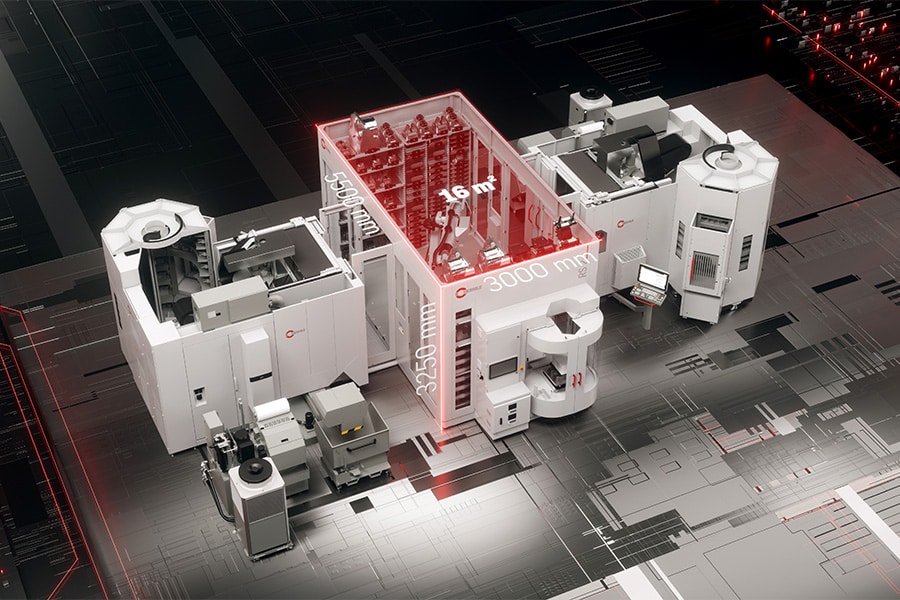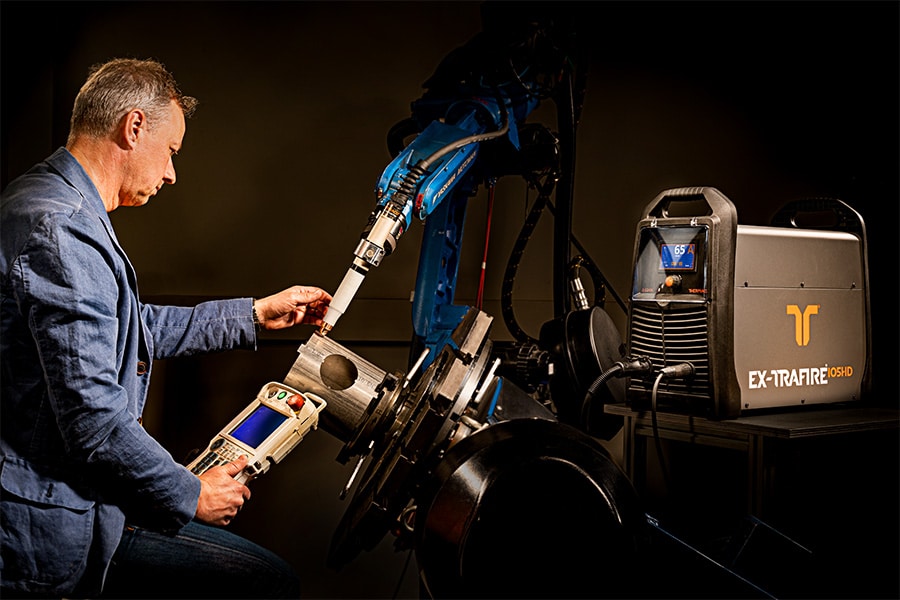
The perfect digital twin of your tools
To increase efficiency during machining, metalworkers. can use advanced tooling technologies and strategies. But the digitization of classic manual processes such as tool selection and assembly can also contribute significantly to increased efficiency and reliability. Based on cutting data, for example, one can create an exact digital twin, thus avoiding errors during machining. Such processes can be fully integrated into the user's CAM software. This can be done in a few simple clicks.
In machining, it is not always about individual tool elements, such as tool holders, cutting tools and inserts. On machine tools, it is often about complete tool assemblies. This then makes for quite a job for the CAM programmer, where, on the one hand, there are various chances for errors and, on the other hand, it is not easy to arrive at the right selection that will produce the best results. Typically, such assemblies take an hour. If certain parts call for the use of 25 or more of those tool assemblies, it means a huge cost in time and money.

In itself, however, the assembly is easy to create. In a few seconds even, by adding the correct description and the relevant parameters (diameter, length...) in the CAM system. The complexity lies in creating an exact digital representation of a tool assembly in a CAM program, i.e. a digital twin. To achieve the most accurate representation, the developer must first search the catalogs of the various suppliers, download the 3D files and then put them together in a CAD program. Only then can they create the tool assembly in the CAM system, technical parameters included.
Streamlined process
So there are clearly opportunities to streamline this process prior to actual machining. Opportunities that can be exploited by integrated tool recommendation and creation of tool assemblies inside the CAM software platform. In this way, it will take less time and increase reliability in design and planning.
An optimized and integrated solution is needed to follow the recommendations for the various elements and to proceed to tool selection. CAM programmers then only need to select the holders, tools and inserts, for example for milling cutters. Users then designate their preferred source, for example a digital tool catalog stored on the server or found in the cloud. The advantage of the latter is that the data is constantly and automatically kept up-to-date by the manufacturer. Once all the input data is there (component, which machining operation, which material...), one can get the right results with a simple push of a button
get, as well as the cutting properties of the tool in question.
This type of digitization solution is what tool manufacturers are working on today. They use special algorithms, which link the task and cutting conditions to the right tools. The algorithm includes data about machining processes, while the tool product data has information about which machining processes it lends itself best to. 1 + 1 then becomes 3. From the extensive tool libraries, the tool assembly can then be exported directly into the CAM or simulation software.

Easy access to tool data
For CAM processes to be productive, the programmer needs access to tool data. These are maintained in tool libraries. However, most are still empty, in part because it may be possible to find the requested data, but oh so difficult to keep them up-to-date.
Moreover, until recently, there were major differences between manufacturers in exactly how that data was structured. This has changed with the arrival of the international standard ISO 13399. Many big names from the machining industry have put their backs into this initiative to describe tool data in a globally recognized way. Among other things, the standard talks about tool attributes (length, width, radius). If the diameter is DCX, it will be the same diameter for every tool supplier. ISO 13399 also helps simplify the exchange of cutting tool data.
If all tools in the industry use the same parameters and definitions, it becomes child's play to communicate the information to other software systems. Similarly, more and more integrated tool libraries are appearing on the market that contain the data of tools from different vendors.

Fail-safe solution
Smart software solutions from tool manufacturers thus enable users to create assemblies according to the ISO 13399 standard that they know will fit together perfectly. The results can then be viewed in 2D and 3D and, of course, all data about the tools is digitally stored. Once saved, programmers can thus easily recall an assembly in their CAM or simulation software. A simple and efficient process, in other words.
Users who have already adopted this way of working talk about time savings of about 50% to get from the individual elements to proper assembly and simulation. There is also a much greater chance that the choice will immediately be the most optimal one. Accurate tool data means that it is possible to detect collisions in advance, during simulation, and thus avoid them during production. The main prerequisite for this is that the tool is represented very precisely. In other words, its digital twin must be accurate.
Heeft u vragen over dit artikel, project of product?
Neem dan rechtstreeks contact op met Sandvik Coromant BeNeLux.
 Contact opnemen
Contact opnemen



